What is Balloon Vine?
The balloon vine, also known as heart-seed vine, heart pea vine, and scientifically as Cardiospermum halicacabum, is a fast-growing annual climbing vine native to tropical Africa and Asia.
It is widely grown as an ornamental plant for its delicate, inflated seed pods that resemble miniature hot air balloons. The balloon vine plant gets its common name from these unique balloon-like fruits.
Here are the Common Names of Balloon Vine in Different Indian Languages:
Hindi: कांफूती or इंद्रवल्ली (Kanphuti or Indravalli)
Tamil: முதகதான் (Mudakathan)
Kannada: ಮುಲ್ಲುಸೊಪ್ಪು or ಅಗ್ನಿಬಳ್ಳಿ (Mullusoppu or Agniballi)
Telugu: భూత్యమామిడి (Bhutyamamidi)
Malayalam: മുടകത്താൻ or കൊടിക്കൊടവാടി (Mudakathan or Kodikkotavadi)
Bengali: কাঁথফুলি or শিন্দুরী (Kantaphuli or Shinduri)
Marathi: लघुफुलाबळी (Laghuphoolabali)
Benefits of Growing Balloon Vine

Growing balloon vine offers several benefits:
- Ornamental value from the distinctive balloon-shaped seed pods
- Attracts pollinators like bees, butterflies, and hummingbirds
- Provides shade over trellises, arbors, and fences when allowed to climb
- Edible pods, leaves, shoots, and seeds provide food and herbal medicine
- Hardy, easy to grow, and fast growing makes it ideal for beginners
The beloved heartseed plant has long been treasured for its healing properties and striking appearance. Its anti-inflammatory and fever-reducing abilities have been used for generations to soothe various ailments from skin irritations to aching joints.
But the heartseed’s most beloved features are its seeds – tiny, ruby-red tablets each shaped like a delicate heart. These vibrant seeds not only treat fevers and inflammation when brewed into tea, but are considered an icon of love and vitality in many cultures.
Modern science is now confirming the powerful compounds that give heartseeds their vibrant hue and ability to ease inflammation. As we uncover more about this cherished plant, its unique heart-shaped gifts continue bringing health and happiness the world over.
When cared for properly, balloon vine is a fun, rewarding plant to add visual interest and greenery to any garden.
Discover How to Grow Flame Vines here
Balloon Vine – Key Facts
| Name | Balloon Vine |
| Common Names | Heart-Pea, or Heart-Seed |
| Origin | Originally indigenous to the Bermudas, Florida and Texas. Nowadays, grows extensively in Africa, India and South America |
| Type | Woody Perennial Vine |
| Outdoor/Indoor | Outdoor |
| Soil | Well – Drained Soil |
| Temperature | 15 to 35°C15 to 35°C |
| Watering | Plenty |
| Sunlight | Bright sunlight |
| Flowers | White Flowers |
| Blooming Season | Summer |
| Height | 10 feet or more |
Growing Conditions for Balloon Vine
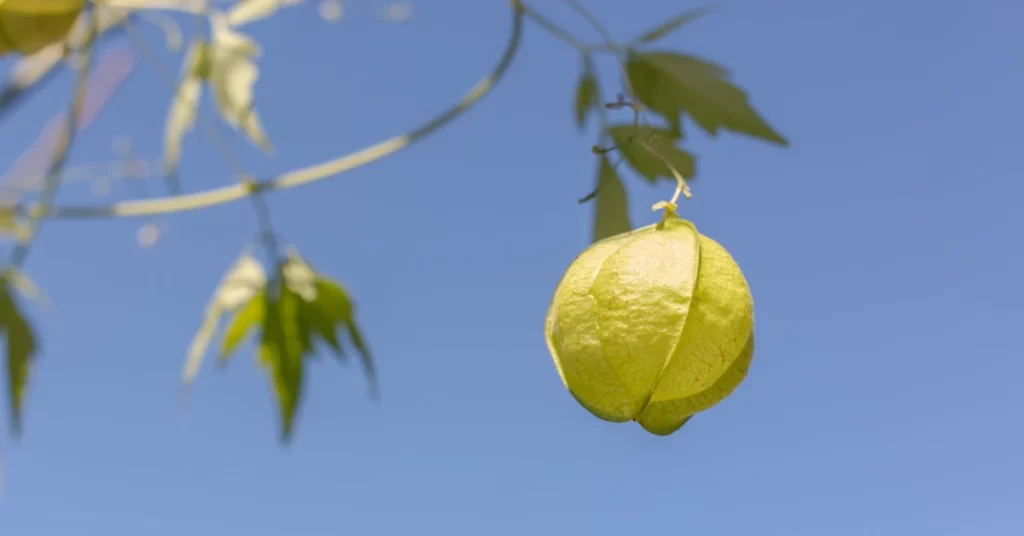
Climate and Temperature
Balloon vine thrives in hot, humid tropical or subtropical climates. It needs warm temperatures between 65-90°F (18-32°C) and does not tolerate frost or cold weather.
In temperate regions, balloon vine can be grown as an annual during the frost-free months of summer. Move potted plants indoors before first frost in fall.
Sunlight Requirements
For best growth and prolific flowering, balloon vine requires full sun exposure for at least 6 hours daily. Partial shade is tolerated, but the vine may not flower or fruit as well.
Soil Needs
Balloon vine grows well in moderately fertile, well-draining soil. The ideal soil pH range is slightly acidic to neutral, between 6.0-7.0.
Avoid planting in heavy clay or soggy soils. Amend clay soils with compost or other organic matter to improve drainage before planting.
Watering Needs
An established balloon vine needs about 1-2 inches of water per week, either from rainfall or irrigation. Water thoroughly to saturate the entire root zone, then allow the soil to partially dry out between waterings.
Avoid overwatering, which can lead to root rot. Drip irrigation or soaker hoses work well for balloon vines. Reduce watering in cooler months.
Learn About How to Grow Acacia Auriculiformis here
Propagating Balloon Vine
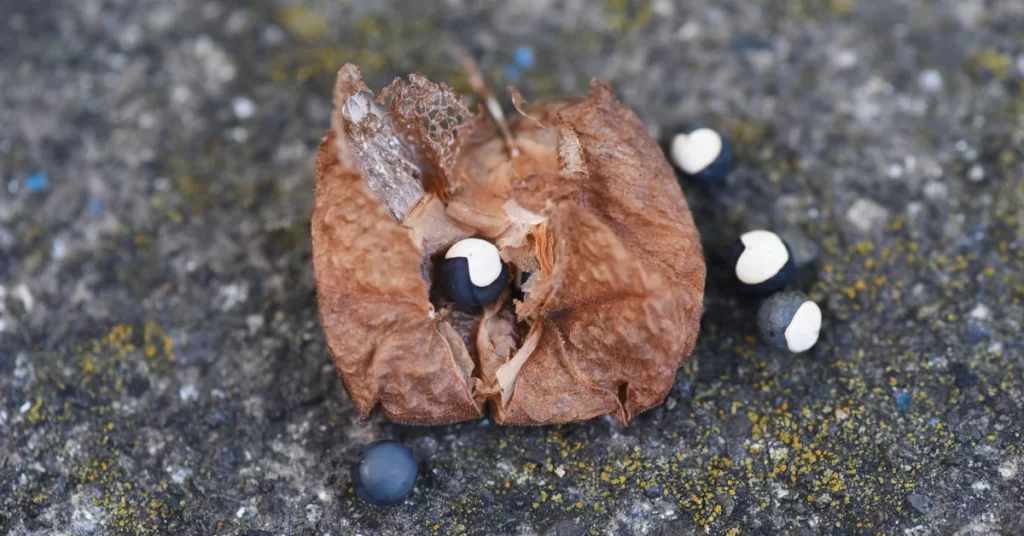
Growing Balloon Vine from Seeds
One of the easiest ways to propagate new balloon vine plants is by planting seeds directly in the garden after the last frost. Seeds have a high germination rate when sown in warm soil.
Start seeds indoors 10-12 weeks before the last expected frost. Sow 2-3 seeds in each pot, 1⁄4 inch deep in a light seed starting mix. Cover with plastic to maintain humidity until sprouted. Thin seedlings to one per pot.
Harden off before transplanting seedlings outdoors after danger of frost has passed. Space plants 12-18 inches apart in full sun.
Propagating from Stem Cuttings
Take 6-8 inch tip cuttings from healthy stems in spring or summer. Remove leaves from lower half of each cutting. Dip the cut end in rooting hormone powder.
Plant cuttings 2-3 inches deep in sterile potting mix like perlite or vermiculite. Enclose in a plastic bag or propagator case to increase humidity. Keep soil moist until rooted. Transplant new plants outdoors after establishment.
Learn How to Propagate Dracaena Marginata Here
Planting Balloon Vine

When to Plant Balloon Vine
In warm climates, balloon vine can be planted outdoors after the final spring frost. Avoid planting too early when cold nights may damage tender growth.
For summer annual growing, start seeds indoors 8-12 weeks prior to the average last frost date. Harden off and transplant seedlings after danger of frost is past.
In cooler zones, plant balloon vine outdoors after daytime temperatures reach 65-70°F and nighttime lows stay above 50°F.
Preparing the Planting Site
Select a site with full sun exposure (at least 6 hours direct sunlight daily) and fertile, well-draining soil. Avoid low spots where water collects.
Prepare new garden beds by tilling or turning over the top 12 inches of soil. Mix in 1-2 inches of aged compost or manure over the bed to enrich and improve drainage.
For container growing, choose a pot at least 12-16 inches wide and deep with drainage holes. Use a quality potting mix formulated for vegetables and climbing plants.
Transplanting Balloon Vine Seedlings
Gently remove seedlings from their small starter pots, keeping the root ball intact. Tease apart any tangled or circling roots before planting.
Dig holes 12-18 inches apart with room to accommodate each plant’s root system. Set seedlings at the same soil depth they were growing at previously.
Backfill holes with surrounding soil, pressing firmly around each plant to remove air pockets. Water thoroughly after transplanting to help roots settle in.
Read About How to Grow Acalypha Indica here
Caring for Balloon Vine Plants
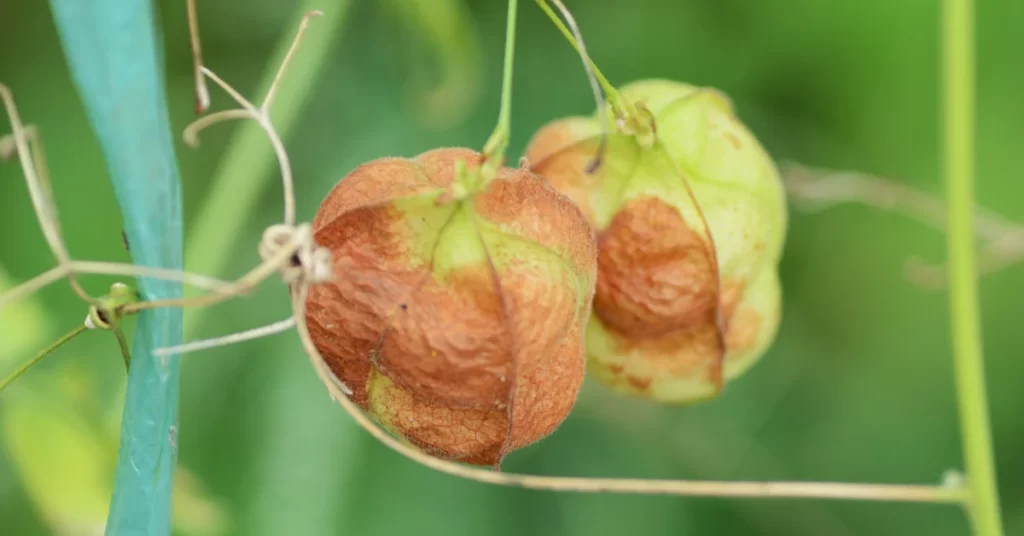
Training and Pruning
Provide sturdy trellises, arbors, fences or cages for balloon vine vines to climb up. Tie main stems loosely to supports as they grow.
Prune actively growing shoots back by one-third to one-half their length during summer to encourage branching, flowering and fruiting.
In fall, cut back any overgrown vines or diseased stems. Remove stems that have finished fruiting down to 2-3 buds.
Fertilizing
Apply a balanced organic vegetable fertilizer or compost tea monthly during the growing season. Avoid high nitrogen fertilizers.
Container plants need more frequent feeding. Use a water soluble plant food every 2-3 weeks according to label directions.
Controlling Pests and Disease
Common pests like aphids, spider mites, mealybugs and whiteflies may infest balloon vines. Hose off pests with a strong spray of water. Apply neem oil or insecticidal soap sprays as needed.
Powdery mildew fungal disease may affect leaves in humid conditions. Improve air circulation and avoid wetting foliage. Apply sulfur spray to control mildew.
Read More About How to Grow Commelina Benghalensi here
Harvesting Balloon Vine
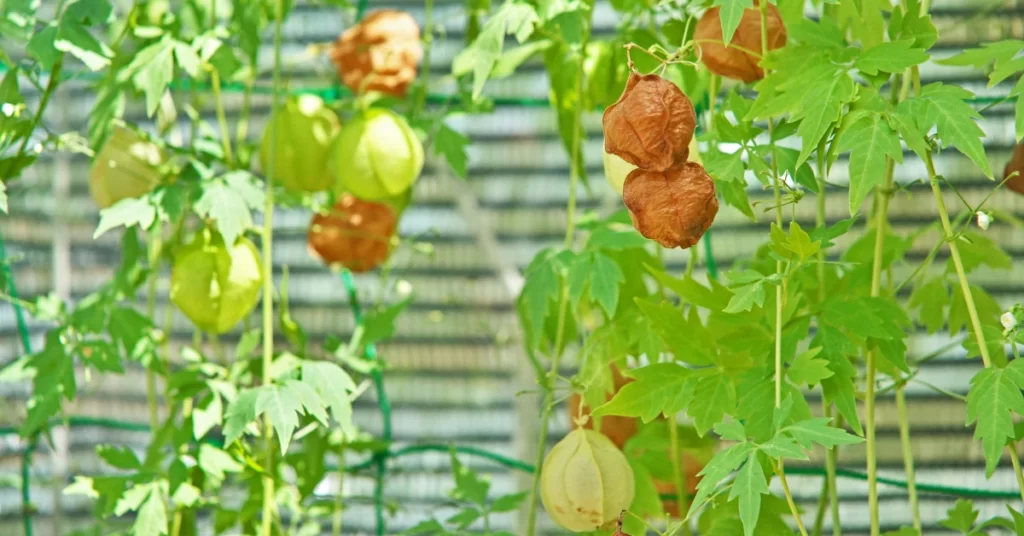
When to Harvest
Begin harvesting balloon vine seeds and seed pods when they turn brown and papery in texture. Pick frequently to encourage more seed pod production.
For eating shoots and leaves, harvest young tender growth when vines are 12-18 inches tall. Older foliage becomes bitter.
Always use sharp pruners or scissors for clean cuts that won’t damage vines.
How to Harvest
Collect mature seed pods by snipping the stems just below each fruit. Air dry pods further indoors before splitting them open to extract seeds.
Harvest leafy shoots when young and tender, while leaves are still expanding. Pick only 1-2 leaves or shoots per plant at a time to avoid overharvesting.
Pick shoots with newest growth at the tip. Use shears for clean harvesting that won’t rip or tug on vines.
Troubleshooting Common Balloon Vine Problems

Leaves with spots or curled edges: Fungal disease. Improve airflow. Apply fungicidal spray.
Weak vines with few flowers: Insufficient light. Move to area with more direct sunlight.
Wilting leaves with root decline: Overwatering. Allow soil to dry between waterings.
White powder on leaves: Powdery mildew. Increase airflow. Apply sulfur spray.
Distorted leaves with honeydew: Sap-sucking pests like aphids, whiteflies, etc. Use horticultural oil or insecticidal soap treatment.
Vines dying back suddenly: Cold damage. Protect plants from frost and freezing weather.
Check Out How to Grow Prosopis Cineraria here
Conclusion
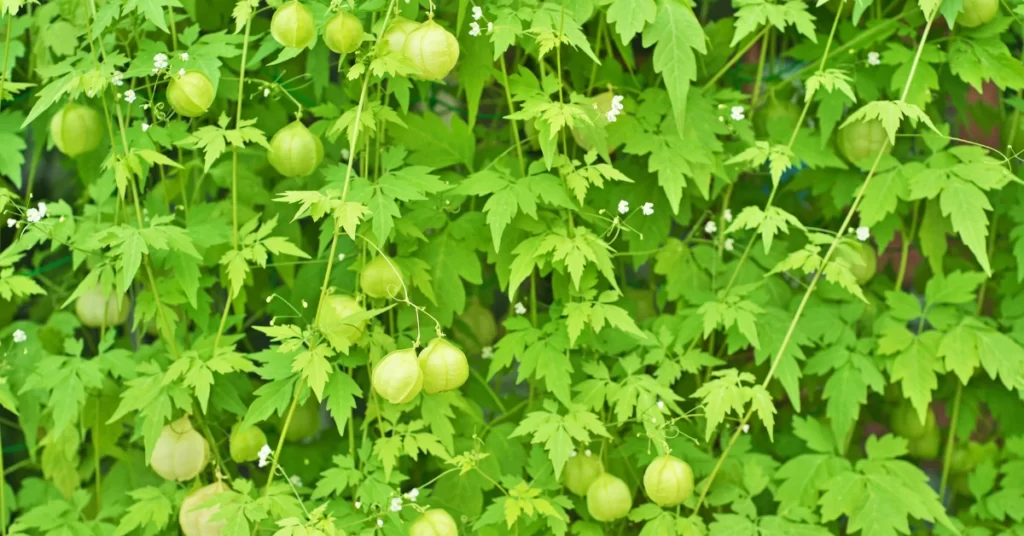
Key Tips for Successfully Growing Balloon Vine
- Provide full sun, fertile soil, and plenty of moisture for best growth
- Use trellises or fences so vines can climb upwards
- Pinch and prune vines to encourage branching and fruit production
- Harvest seed pods frequently to maximize yields
- Control pests and disease with organic sprays as needed
- Bring potted vines indoors before first fall frost
Enjoying the Benefits of Homegrown Balloon Vine
Adding balloon vine to your garden provides season-long visual interest as well as edible seeds, shoots, and leaves. Watching the decorative seed pods take shape and swell like little hot air balloons is an enjoyable show in itself.
With its tropical look and fast growth, balloon vine is sure to quickly become a favorite annual vine that’s easy for gardeners in any warm, sunny location to grow and appreciate.
Frequently Asked Questions
What are some common names for balloon vine?
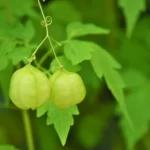
Balloon vine is also known as heart-seed vine, heart pea vine, and cardiac climber vine. The botanical name is Cardiospermum halicacabum.
How big does balloon vine grow?
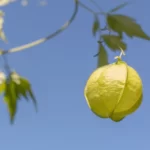
In ideal conditions, balloon vine can grow up to 20 feet tall and 6 feet wide. It is a fast growing vine.
How much sun does balloon vine need?

For best flowering and fruiting, balloon vine should receive a minimum of 6 hours of direct sunlight per day. It grows best in full sun.
Is balloon vine toxic?
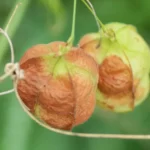
All parts of balloon vine are considered non-toxic. However, some people may have skin sensitivities to the plant oils, especially from sap. Wear gloves when handling.
How long do balloon vine plants live?
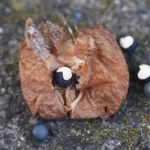
Balloon vine grown as an annual will survive one growing season. In tropical zones, it may come back year after year and live for several seasons as a short lived perennial.

1 thought on “How to Grow Balloon Vine | Heart-Seed Care?”